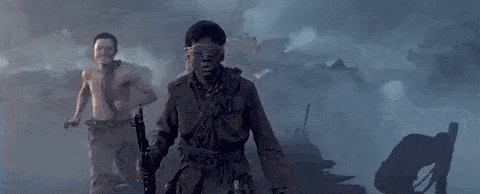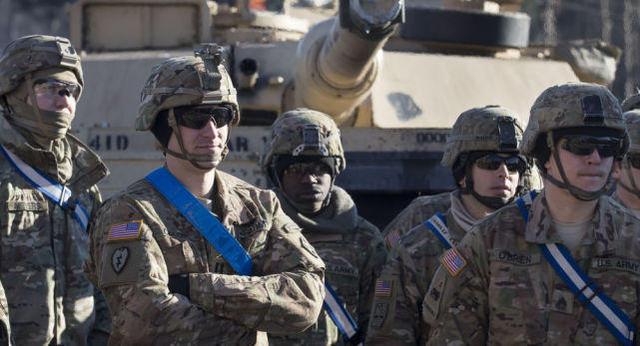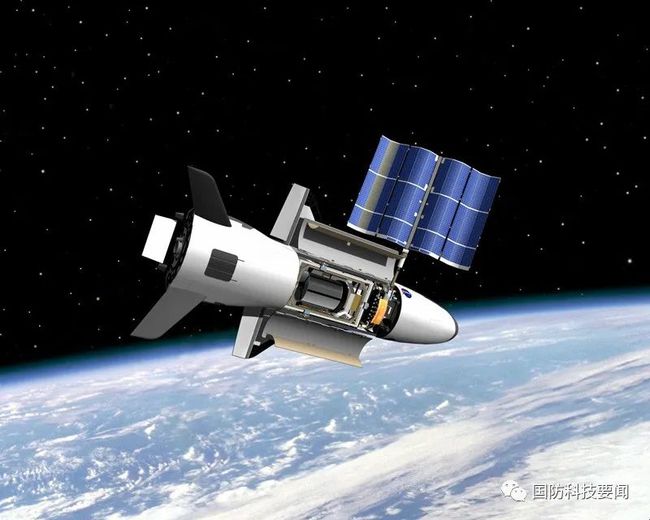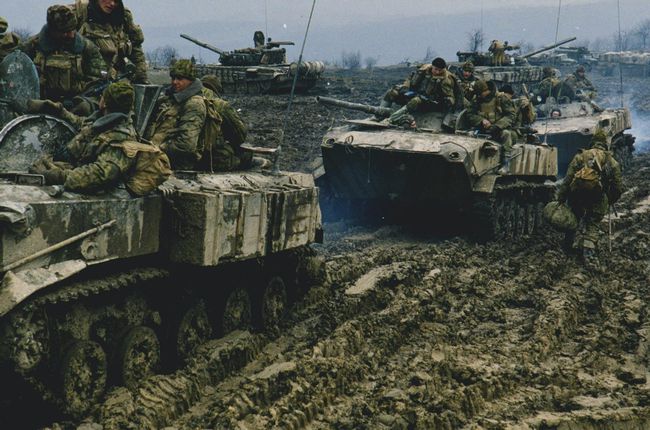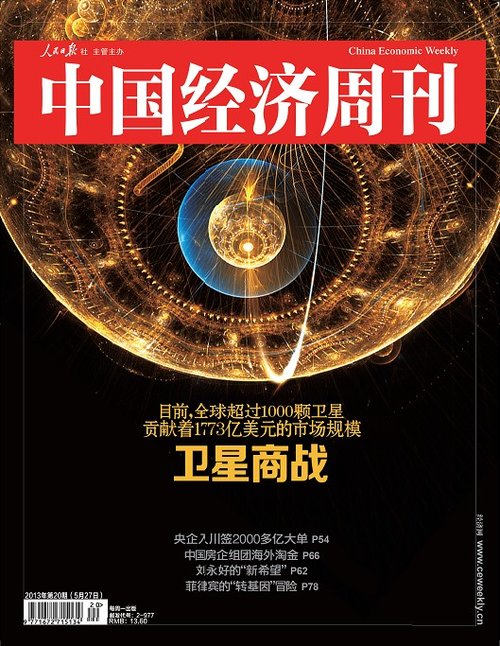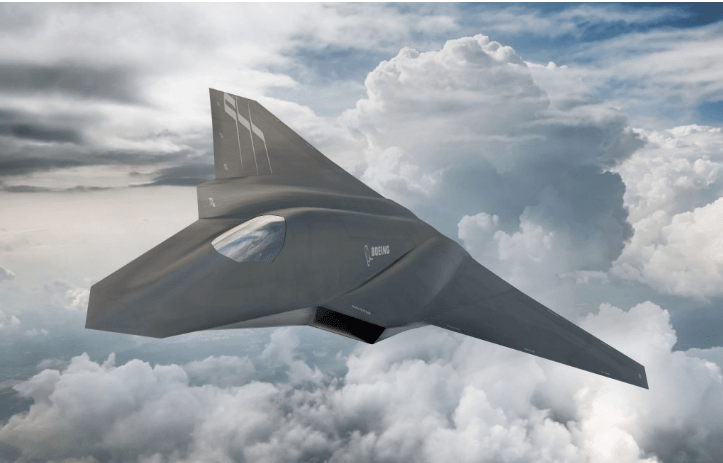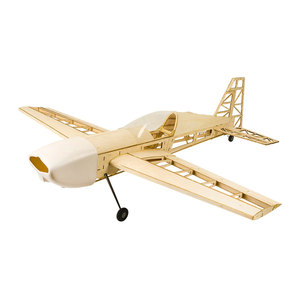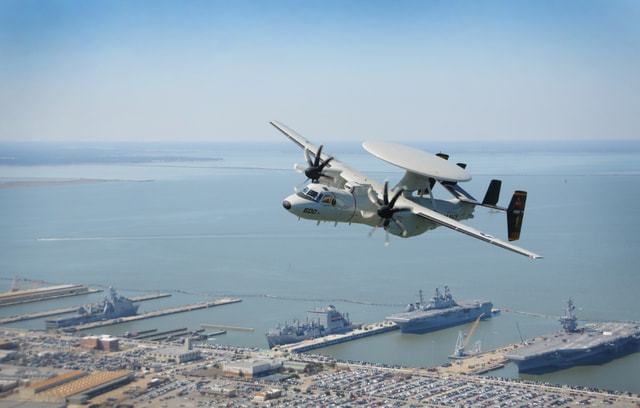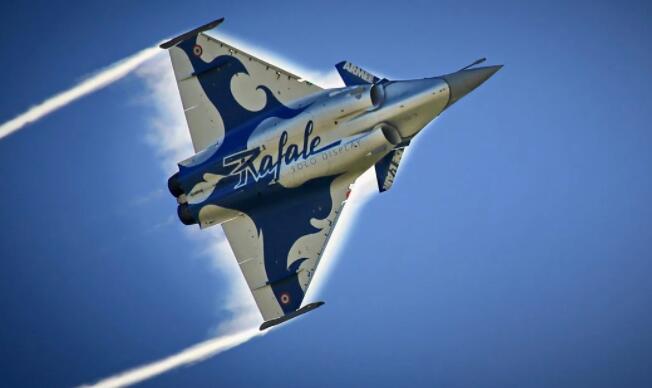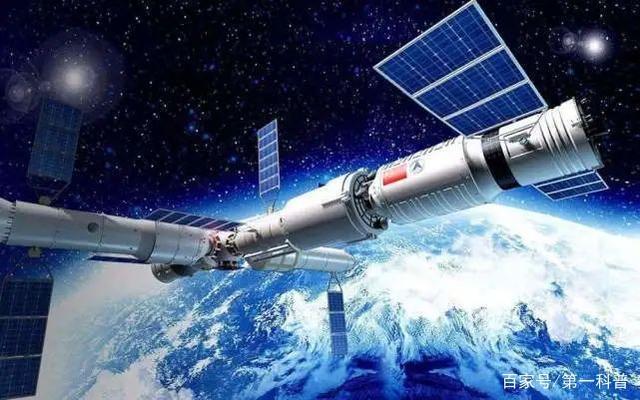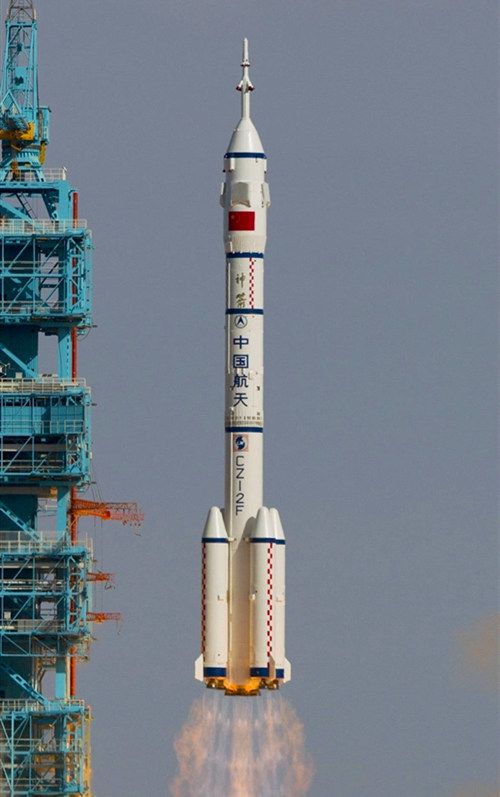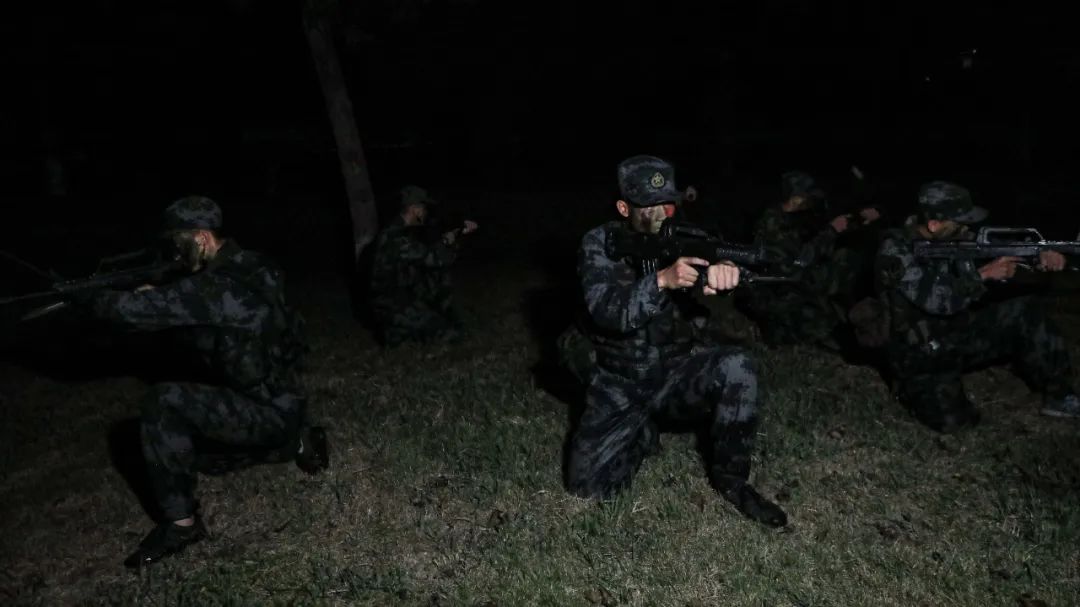强军之路,风起云涌
——国防和军队改革40年回顾
解放军报记者 欧灿 费世廷 尹航 王天一
新华社记者黄树波
▲2018年10月25日上午,中共中央总书记、国家主席、中央军委主席习近平到南部战区视察调研。这是习近平同驻粤部队副师级以上领导干部亲切会见。记者周朝荣 摄
金秋十月,中国改革开放的先行区广东,再次迎来了世人的瞩目。
在改革开放40周年之际,习主席到珠海、清远、深圳、广州等地调研。六年前,十八大后,习主席第一次赴北京考察调研,也选择了广东,下令改革开放后重新出发。
习主席两次站在改革开放前沿,深刻思考国防和军队建设,十分关心改革强军进程。
习主席首次在粤南视察原广州军区部队时作出重要总结:“实现中华民族伟大复兴是中华民族近代以来最伟大的梦想。这个伟大的梦想是强国之梦,对于军队来说,也是中华民族最伟大的梦想。强军之梦。”
习主席再次赴岭南视察成立仅两年多的南方战区,要求战区党委适应新体制新职能,加强各级党组织建设增强战区组织能力,增强领导的备战和指挥完成任务能力。
从军区向战区转变,体现了我军领导指挥体制、部队规模结构等重大领域改革取得的历史性步伐、突破和成就。
▲资料图
国强必强军,强军必改革。人民军队的发展史,就是一部改革创新史。 40年来,人民军队经过多次精简改组,以打破司令部制、军区制、大陆军队制。时代裁减部队30万……伴随着国家改革开放的伟大进程,军队改革着力建设中国特色军事力量体系,完善中国特色社会主义军事体系,解放和发展战斗力,解放和增强军队活力,对外开放人民军队有了新体制、新结构、新格局、新面貌。
翻开40年壮丽画卷,改革强军史深刻回响,在强国强军伟大征程上响起:改革是决定国力的关键之举当代中国的命运,也决定了人民军队的未来。关键动作。
历史关头的大觉醒
历史的车轮滚滚向前,有些事件注定要被铭记,有些瞬间注定要载入史册。
▲1985年6月4日,邓小平在中央军委扩大会议上宣布,中国人民解放军将裁减100万人。资料图
1985年6月4日,邓小平在中央军委扩大会议上伸出手指——宣布中国人民解放军将裁减100万人。人民军队走上了中国特色精兵之路。
2015年9月3日,习主席在纪念中国人民抗日战争暨世界反法西斯战争胜利70周年大会上郑重宣布:中国将裁减军队30万这一年,人民军队全面实施改革强军战略,在中国特色强军道路上迈出了关键一步。
任何历史事件的发生都不是偶然的。站在新的历史起点,回首历次改革,人们不禁要问:在重大历史关口,人民军队是如何实现翻身、涅槃重生的?
六年前的粤南之行,一路走来,习主席一再强调,改革开放是我们党历史上的一次伟大觉醒,正是这种伟大觉醒孕育了我们党的伟大创造。新时期理论付诸实践。回望40年风雨兼程,军队改革也是大觉醒的产物,是党在重大历史关口把握建军治军规律作出的战略决策.
改革开放之初,在国家和民族发展处于拐点的时候,人民军队是如何摆脱“文革”带来的困境,大踏步前进的轻点?
邓小平深刻洞察国际形势发展变化,作出“和平力量发展超过战争力量发展,我们可以争取更长的和平时期”的科学判断,指出和平与发展是当今时代的主题。
党中央对我军建设的指导思想由此开始了战略转变,从以“早打、大打、核战”为基础的战前准备状态向和平时期建设的轨道转变. 100 万人的解除武装震惊了仍处于冷战状态的世界。
1990年代中期,党中央提出“两个根本转变”的战略思想,即军事斗争的准备工作要从应对一般条件下的局部战争转变为打赢现代技术下的局部战争,尤其是高科技条件。军队建设从数量型向质量效益型转变,从人力密集型向技术密集型转变。
在这一战略思想的指导下,1997年9月,中共中央宣布三年内裁减50万军职。 2003年9月,党中央决定在2005年前再裁减部队20万人。
进入新时代,我国进入由大国向强国发展的关键阶段。国防和军队建设如何应对重大变化、抓住重大机遇、实现重大发展?
党的十八大以来,我们着力应对当今世界空前变化,切实维护国家安全,着力坚持和发展中国特色社会主义,统筹推进“以习近平同志为核心的党中央放眼世界、放眼大局、评优军以大智慧和大勇气,打开了深化国防和军队改革的大门。
2013年11月,中共十八届三中全会召开。中共中央根据习主席的建议,决定将深化国防和军队改革纳入全面深化改革的总体部署,上升为党的意志和国家的行为。党的历史上第一次将深化国防和军队改革单独写入全会《决定》。
2014年3月15日,新华社一则消息海内外传开——习近平担任中央军委深化国防和军队改革领导小组组长。党的历史上第一次由总书记亲自担任深化国防和军队改革领导小组组长。
这两个“第一”传达了什么?有军史专家表示,这充分表明以习近平同志为核心的党中央把深化国防和军队改革摆在党和国家工作全局的突出位置,是有计划、有计划的。从实现全面建成小康社会目标、实现中华民族伟大复兴的中国梦的战略高度出发。
习主席两次主持中共中央政治局集体学习,主持中央军委改革领导小组3次会议,听取有关大单位改革意见和建议多次亲临,并亲自组织研究重大改革问题。 2015年7月29日,中共中央政治局常务委员会正式批复《深化国防和军队改革总体方案》。一套解决深层次矛盾、有重大创新突破、体现人民军队特色的改革设计破茧而出。
▲2015年11月24日至26日,中央军委改革工作会议在北京召开。中共中央总书记、国家主席、中央军委主席、中央军委深化国防和军队改革领导小组组长习近平出席会议并发表重要讲话。记者冯凯轩摄
2015年11月末,中央军委改革工作会议在北京召开,我军力量、深度和广度的全面革命性变化在我军历史上是前所未有的。领导指挥体制改革率先启动,着力破除体制障碍,确立新军事体制“四梁八柱”;一年后,全军规模、结构和兵力构成改革全面启动,着力解决结构性矛盾,实现了军队体制的彻底变革;今年11月中旬,中央军委政策体制改革工作会议召开,重点解决政策问题,部署推进军事政策体制改革。 “三大攻坚战”接连、联动、推进,军队改革朝着全面胜利的目标迈出了决定性的一步。
时光荏苒,历史见证。在“巨变——庆祝改革开放40周年”现场,两台望远镜吸引了众人:一台是邓校长在看华北大学演习时用的,一台是用的习主席今年4月12日在南海阅兵时使用。
两个不同时代的望远镜引起了参观者的回顾和反思。是中国共产党的领导核心,着眼长远,在重大历史关头谋划战略,引领人民军队走上了中国特色强军之路。
解放思想的自我革命
▲资料图
推动历史的往往是锋利而强大的意识形态杠杆。
1978年是中国改革开放的元年。
这一年,在邓小平老一辈革命家的直接推动下,一场关于真理标准的大讨论席卷全中国。 《解放军报》在短短几个月内发表了100多篇文章,带领全体官兵大发雷霆。人民军队的思想桎梏,恢复和发扬实事求是的优良传统,为人民军队进入新的发展时期做好思想准备。
2014年是中国全面深化改革的开局之年。
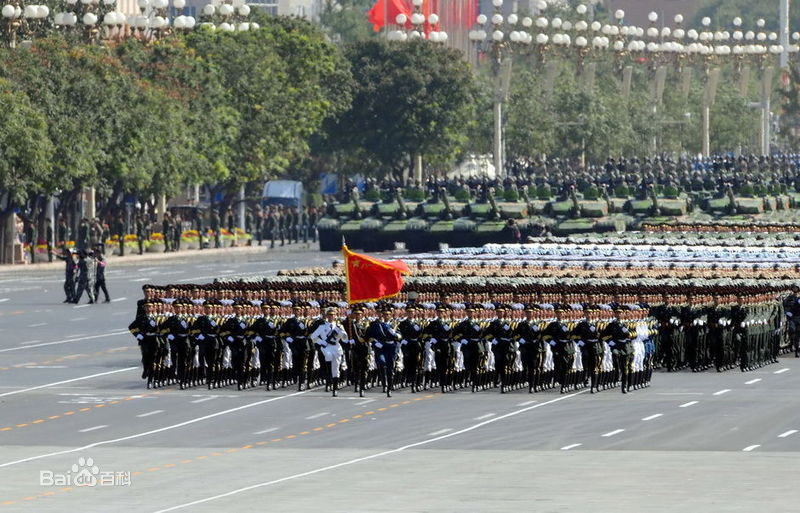
今年,在习主席和中央军委统一部署下,全军积极开展战斗力标准研讨。 “我军的根本职能是打仗,战斗力的标准是军队建设的唯一根本标准。”习主席把军事训练和备战作为重塑军队的战略抓手,带领全军聚焦备战和战争的主体责任。军队工作的重点和职能的真正回归,为我军全面革命变革奠定了坚实的思想基础。
头两年两次大讨论,看似偶然却透露着一个确定:思想是行动的先导,任何重大的改革都离不开思想的解放。
军事领域是竞争最激烈的领域,也是最具创新活力、最需要解放思想的领域。改革开放40年来,人民军队一路走来。改革创新从未停止,始终朝气蓬勃。共工与时俱进,解放思想,但很难与时俱进,解放思想。
与时俱进,解放思想,难以突破传统思维的桎梏
长期以来,我军实行了集作战指挥和施工管理功能于一体的一、施工使用系统。以兵取胜、重兵团、以量取胜的理念,早已深深烙印在一代又一代官兵的脑海中。
进入21世纪,一些过时观念的桎梏依然摆在我军面前:我们每天都在呼唤战争,但我们却常常以不打仗的心态备战;当我们谈制度的时候,其实往往是指“村村落火,户户起烟”;谈了多年的同盟,还是离不开“大陆军”思想和狭隘的军事观念。 ..
2016年元旦刚过,习主席在改革启动后首次视察部队时就提出了深刻的观点:“改革是一场革命,这场革命既是制度性的,也是思想性的。”他认真的说道。 ,要坚持解放思想,与时俱进,并行变革,主动进行思想革命,解放一切陈旧观念、固有模式、路径依赖,防止穿新鞋走旧路径和采取新的。瓶装旧酒。
时隔两个月,全军以上领导机关召开“新体制、新职能、新使命”大讨论,“换功能、换风格、换新使命”的“理念突破”改变工作方法”拉开了序幕。
转动“身体”和“大脑”。中央军委各部门加紧明确权责界限,规范工作流程;各战区从“正式联盟”走向“神圣联盟”,联战值班、联战推演成为常态;新调整组建的部队在“颈下”改革中,着力缩短磨合期,加快形成战斗力……进入“新制时代”的人民军,开启了改革征程的“二次创新”。
与时俱进,解放思想,兴趣模式的壁垒难以推倒
1982年,铁道兵和基建兵的废止正在酝酿之中,一位老同志找到分管裁军工作的副总参谋长何政文,怒道:“你知道吗?铁道兵的历史?历史性的错误!”
对于生于战火硝烟、从苦难走向辉煌的人民军队,哪支军队不赫赫有名,哪个部门在历史上不曾光荣而光荣?有时候,面对改革撤退、投降、改革,比面对战场上的炮火和炮火还要残酷和艰难。
当时,为解决军队“肿、散、狂、奢、懒”的问题四十军现在有哪些部队,邓小平指出,精简整顿要用革命的方法,改进的方法根本行不通。面对解散军种的阻力,邓小平的回答直截了当:“过不去,转身。”
今天,面对进入深水区的国防和军队改革,习主席下达了如山的命令:“越是艰难,越要坚定意志,勇往直前。 ,敢踏险滩,就没有过不去的火山!”
四大司令部、七个军区一夜之间告别历史舞台。曾经征战南北的战旗,陆续从我军战列中撤出。勇于踏上强军兴军新征程。
与时俱进,解放思想,要紧跟新情况新问题,不断深化
兵无常,水无常。改革开放40年是人类社会信息技术大发展时期,伴随着新一轮世界军事革命。从马岛战争到海湾战争,从科索沃战争到伊拉克战争,随着战争形式和作战方式的不断演变,党中央、中央军委对现代战争的认识不断加深,对现代战争的认识也不断加深。了解军队建设的特点和规律。
1970年代,世界军事革命风起云涌之际,邓小平敏锐地指出,“现在是联军作战,空中、地面、水中也是。不是小米加步枪的过去。”
▲1981年9月,解放军在华北某地举行现代条件下的军事演习。图片:解放军画报。
正是在这一时期,以1981年9月的华北大演习为标志,各军兵种的承包训练成为我军训练的主要特点。同时,以集团军的组建为标志,人民军在综合化道路上迈出了一大步。
1990年代四十军现在有哪些部队,随着新时代军事战略方针的确立,我军改革建设进入了以谋划推进信息化战争为基础的新阶段:军种结构为优化,军队比例进一步降低,一大批高新技术立项和改造。全军广泛开展科技训练活动,多军种联合训练初具规模。
新时代,面对世界“前所未有的变化”和世界新军事革命全面深入发展带来的严峻挑战,习主席深刻指出,“只有与时俱进,与时俱进,大力推进军事创新,才能尽快缩小差距,实现新的跨越。”
这几年,从制定新形势下的军事战略方针,到提出“五个重点”的军队建设战略指导,从坚持政治建设、改革强军、科技兴军,科技兴军、依法治军、重训备战、推进军民融合发展……一系列战略布局和战略举措标志着我党对国家法律的认识国防军事建设迈上新台阶。
与时俱进,解放思想,要保持专注,走自己的路
思想的解放并不意味着“幻想”。我们要坚持实事求是、两手抓的原则:该破的就破;不破则衰;应该确立的必须确立;
改革不是改变方向,改变不是改变颜色。 1986年,中央军委扩大会议通过《关于新时代军队政治工作的决定》; 1999年,全军政治工作会议通过《关于改革开放和发展社会主义市场经济条件下全军思想政治建设若干问题的决定》; 2014年古田全军政治工作会议通过《关于新形势下全军政治工作若干问题的决定》……看三个《决定》,党对军队的绝对领导是一条贯穿它们的恒定红线。
党的十八大以来,以习近平同志为核心的党中央作出一系列制度安排和战略决策——军委主席负责将制度写入党章;重点加强中央军委集中统一领导,重构我军作战指挥体制和领导管理体制;武警部队受党中央、中央军委集中统一领导;军队全面停止有偿服务;深化我军党的建设体制改革……无论改革多么解放思想、改革多么深入,人民军队的性质、宗旨和本色始终不变。
关注精英士兵的战争之路
▲2018年1月3日上午,中央军委隆重召开2018年训练动员大会。中共中央总书记、国家主席、中央军委主席习近平向全军下达训练令。这是部队接到训练令后,在动员大会主会场进行的训练。资料图
军队是为了战争。深化国防和军队改革,打赢仗是起点,也是终点。
古往今来,亚历山大“马其顿方阵”的崛起,赵武陵王“胡服骑射”的创新,海湾战争掀起的世界新军事革命……任何伟大的军事革命,都提高战斗力的“靶心”。
改革开放之初,邓小平在领导人民军队精干整编时说,军队要“抓质量,抓实战,抓少少精真的是一流的。”
进入新时代,习主席在谋划新一轮改革时特别强调:“至于军队建设和改革,我最想的是,我军能否在党和人民需要的时候始终坚持下去党的绝对领导能不能拉起来打胜仗,各级指挥员能不能带兵打仗、指挥打仗?”
战斗力!战斗力!不同的历史时空,相同的目标追求。改革开放以来,党中央、中央军委始终以提高军队战斗力为核心,以能打能打为目标推进国防和军队改革战争。
这是一种改进领导和指挥系统的方法
2016年1月16日0时,著名的沉阳、北京、兰州、济南、南京、广州、成都7个军区停止行使指挥权,东、南5个军区,西部、北部和中部开始运作。
前后不到一个月,15个军委机关部门调整组建,组建陆军领导机构、火箭军、战略保障部队,改革领导指挥体制迈出了惊天动地的大步。
领导指挥系统是一支军队的“四梁八柱”,领导指挥的有效性直接关系到战场的胜败。改革开放以来,我军的领导指挥体制与时俱进,形势不断变化。
变得更瘦。 100万美元的裁军,三个指挥部牵头,人员编制减少近一半; 1997年裁减部队50万人,撤出部分指挥部、军区和军械机关二级部门。在新一轮国防和军队改革中,中央军委人员减少了三分之一。
变得更有效率。将司令部制改为军委多部门制,使军队最高领导和指挥权更好地集中在党中央和中央军委手中。建立军委负责、战区负责、军队负责建设的新型领导指挥体制,不仅有利于军委的高效指挥,而且有利于提高军委工作效率。军队建设。
变得更加面向未来。未来的战斗是各军兵种的联合作战。 2003年,在军队进行精简整编时,我军成立了联合作战指挥机构,开始探索联合作战。新一轮改革完善了军委联合作战指挥机构,建立了战区联合作战指挥机构,建立了平战结合、运行正常、主业专精、精干高效的新型联合作战指挥体系建立新的联合后勤保障体系,弥补了人民军联合作战指挥体系的最后一个短板。
▲全军首次公开招聘文职人员面试。资料图
这是减少军队规模和提高效率的一种方式
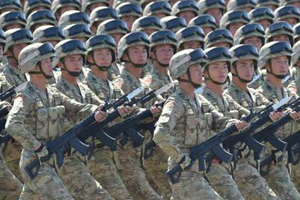
今年7月,一则“全军首次向社会公开招聘文职人员”的消息在社会上引起广泛关注。一个月后,14万多名考生报名,走进火热的“军考”考场。
文职人员入伍背景是我军规模结构的重大调整。
长期以来,我国官兵比例、部队和机构比例不合理,“头重脚轻、尾巴长”等问题始终突出。如果一支军队在规模、结构和兵力构成上落后于时代,战争形式和作战方式的发展滞后,就有可能失去战略和战争主动权。
40年来,国防和军队的改革,也是军队“减脂增肌”强身健体的“加减法”。
减机构,强基层。军队战斗力的基础在基层。百万美元的裁军,使团级以上的单位减少了4000多个;在新一轮改革中,减少了1000多个团以上组织单位,“小组织带大部队”成为常态。
减少现役并增加文职工作。 Thirteen years ago, our army began to implement the civilian personnel system, and some security positions were held by non-active duty personnel. In the new round of reform, the number of active duty posts in non-combat agencies has been reduced by nearly half, a unified civilian personnel system has been established, the scope of civilian personnel allocation has been further expanded, and more troops have been put into combat positions.
Reduce "officials" and keep "soldiers". Soldiers are the basic component of combat effectiveness, and a scientific and reasonable ratio of officers and soldiers is crucial to improving combat effectiveness. After the million-dollar disarmament, 76 positions were changed from officers to non-commissioned officers, and the ratio of officers and soldiers dropped significantly. After a new round of reforms, the number of officers has been reduced by 30%, and the ratio of officers and soldiers has been further optimized.
At the same time, more "addition and subtraction methods" are also being carried out in various fields of military construction: the number of colleges and universities in the entire army and the armed police force has been reduced from 77 to 43, and a new military personnel training system has been established; the establishment of the Military Commission for Science and Technology The committee readjusted the layout of military scientific research forces and formed an "aircraft carrier formation" to set sail; the Central Military-Civilian Integration Development Committee was established, and military-civilian integration was elevated to a national strategy. More and more "20" series of new weapons and equipment have been successfully developed, and the elimination of old equipment has accelerated.
This is a way of optimizing and reshaping forces
If it is said that the reform of the leadership and command system is "changing the chessboard", then the reform of the scale, structure and force composition is "moving the chess pieces". The same chess pieces, with different layouts, generate vastly different energy.
In the past 40 years, a series of grand military parades have witnessed the changes and development of the people's army.
In the 1984 National Day military parade, airborne troops, armed police and other troops appeared in the parade team for the first time. Among the 47 phalanxes, the number of mechanized phalanxes exceeded half. Riding the spring breeze of reform and opening up, the army has been transforming into mechanization.
In the 1999 National Day military parade, the Marine Corps, the Army Air Corps... a new army of powerful troops made a mighty appearance, and there were only 2 infantry phalanxes among the 52 phalanxes. In the face of the new wave of military reform, the army has accelerated its transformation from manpower-intensive to technology-intensive.
In the 2009 National Day military parade, the communication troops and drone teams first appeared in the National Day ceremony, and the new medium and long-range missiles and other major powers lined up with long swords. Focusing on winning local wars under the conditions of informatization, new growth points of the people's army's combat effectiveness continue to emerge.
▲On the morning of July 30, 2017, a military parade celebrating the 90th anniversary of the founding of the Chinese People's Liberation Army was held at the Zhurihe Joint Training Base.
For the 90th anniversary military parade in 2017, 34 ground squadrons and air echelons were arranged on the battlefield according to combat formations, and newly formed troops such as strategic support troops made a new appearance. Looking forward to the future battlefield, the new focus of the people's army construction, such as information-led, system-supported, elite combat, and joint victory, is more clear.
The parade ground is just a microcosm of the continuous reform and reshaping of the People's Army.
Today, the proportion of our army's army in the total army staff has dropped below 50% for the first time, and the "continental army" system has been broken; correspondingly, strategic early warning, high sea defense, long-range strike, strategic delivery, information Support and other new combat forces have been enriched and strengthened.
Today, the Army's 18 armies have been restructured into 13 armies. The name of the group army has not changed, but the internal organization has been turned upside down. Since our army formed a combined army in the 1980s, the army's combined level has shifted from army to brigade to battalion, and a full, combined, multi-functional and flexible troop formation has been gradually formed.
The historical responsibility of the mission
▲Data Map
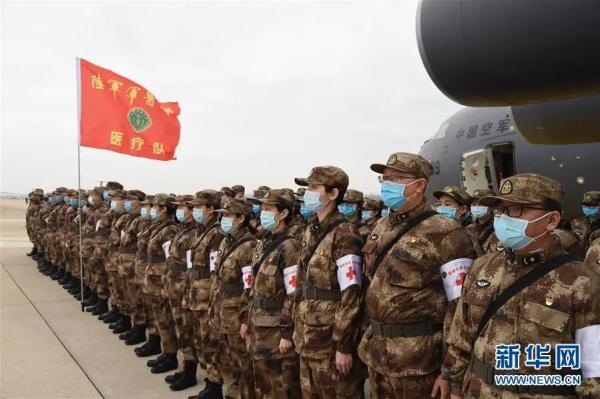
Reform, in the final analysis, is self-revolution.
At the beginning of the new round of national defense and military reforms, President Xi warned the entire army that the army must keep up with the pace of the central government, and resolutely promote various reforms of the army with the spirit of opening roads every mountain and building bridges when encountering rivers. Everyone must have such a historical responsibility.
The choice is righteous, go to see Dan Xin. In the 40 years of reform and opening up, every major reform of the people's army is inseparable from the historical responsibility of loyalty and mission, and is accompanied by unrelenting sacrifice and dedication.
Deng Xiaoping said: "Disarmament is something that offends people, so let me offend, and don't hand over the conflict to the new chairman of the Central Military Commission." He also instructed the senior military generals: How to subtract, please come up with ideas, I only talk about the headquarters taking the lead.
He Zhengwen, the "chief swordsman" and then deputy chief of staff of the million-scale disarmament, first mobilized his four children to take off their military uniforms. The demonstration effect of senior cadres has become a powerful driving force for disarmament.
Reform and strengthen the army, not only the "muscles" of the army, but also the "shoulders" of the soldiers. In the face of the "reform pains" of withdrawing, downgrading and reforming, and facing the "ideological shock" of advancing, retreating and staying, whether or not to face the challenge and take responsibility is the touchstone to test the loyalty and responsibility of revolutionary soldiers.
In this round of reforms, when the last military salute was paid to the military flag, Wu Pengcheng, the former deputy commander of a regiment of the 31st Army, could not help but burst into tears. These tears are not only reluctance for the barracks and comrades in arms, but also guilt for his father Wu Haijin.
More than 20 years ago, in order to support the reform and development of the army, Wu Haijin, who was then a division commander, took off his military uniform and pinned his military dream on his only son, Wu Pengcheng. His son is also very upbeat, and has won the third-class meritorious service 8 times, and was also named "outstanding staff officer of the whole army".
"I originally hoped that my son would work in the army for a lifetime to make up for my regrets, but I didn't expect that he would also encounter reforms. At the moment of reform, staying and staying are all contributions, and real soldiers must withstand this test." Wu Haijin is his son pleased with the choice.
Two generations of soldiers used their silent "turning around" in exchange for the "transformation" of the people's army.
"If it's a small profit, why don't you wear a levy." Every time the military reforms, there are countless soldiers like the Wu family and their sons, who have a position to work hard, adapt as soon as possible when changing positions, and resolutely obey when they are not. To stay is to support reform, and to leave is also to support reform!
In the face of reform and adjustment, even though there are all kinds of reluctance and nostalgia in my heart, when that day really comes, there will be no noise.
In the early 1980s, officers and soldiers of the 8th Railway Division of the Railway Corps who were fighting on the construction site of Luan into Tianjin suddenly received an order to "transfer jobs collectively". The officers and soldiers went all out to "write the last page of the glorious history for the railway soldiers", completed the task of diverting water through mountains and waters 3 months ahead of schedule, and created the "spirit of diverting water" that caused a sensation across the country.
In 1998, a division of the Jinan Military Region had decided to withdraw its staff. After receiving the order to fight the flood in the Yangtze River in Hubei, the officers and soldiers devoted themselves to the rescue.
In this round of reforms, as the first army-level unit to be relocated due to reforms, the former 27th Group Army was ordered to station in Taiyuan, a few hundred kilometers away. Not long after they settled down, another order came, and the group army faced new adjustment and reform. No matter whether it is transferred, withdrawn and relegated, or transferred to another post, transferred to another job or demobilized, officers and soldiers can go wherever they need to, pack up their backpacks and set off again.
▲A certain army unit is on its way to defense. Data Map
"Iron soldiers in a running water camp". From the Guanzhong Plain to the Northwest Desert, from the Land of Abundance to the Snowy Plateau, from the Jiangnan Water Village to the Lingnan Mountains... In the new round of reform, with the diversion, adjustment, transfer, and transfer, how many heroic troops have left the prosperous cities and moved to remote villages and towns? Warm-blooded soldiers bid farewell to their parents, wives and children and go to a strange distance.
Almost all the cadres of the army organs in the southern theater are from different places, and almost all of them live in two or even three or four places with their family members and the elderly. In the transitional camp, the family members of a regiment cadre were unable to move out, and "the father of the doll in the courtyard is in the distance, and the father of the doll in the distance is in the courtyard" has become a special scene.
Different ages, same choices. A grain of sand and a drop of water are but a drop in the ocean in the torrent of history; a person and a family are but a wave in the tide of reform. But it is every soldier who has handed in excellent reform answers that the army can stand the test of the times; it is the hard work and dedication of every soldier that has created the brilliance of the army and shaped the future of the army.
The journey is long and full of trials and tribulations.
On the 40th anniversary of reform and opening up, President Xi declared to the world on the turbulent South China Sea: "China's reforms and opening-up will not stop, and China will surely have new and greater miracles that will impress the world."
We firmly believe that under the leadership of the CPC Central Committee with Comrade Xi Jinping at its core, the reform and strengthening of the army and the people's army will surely create "new and greater miracles that will impress the world".

